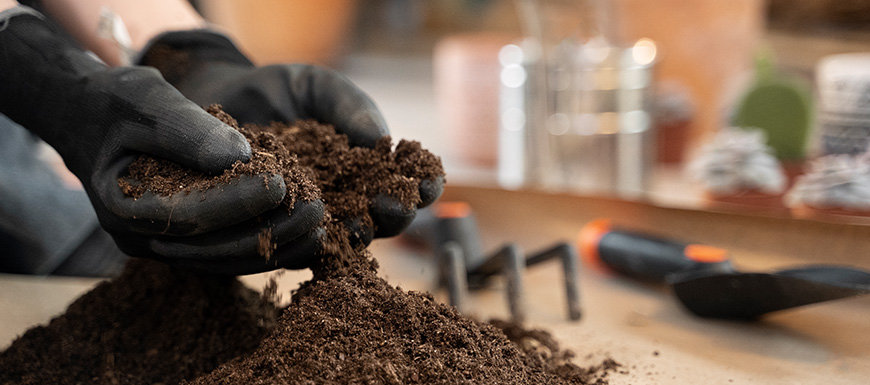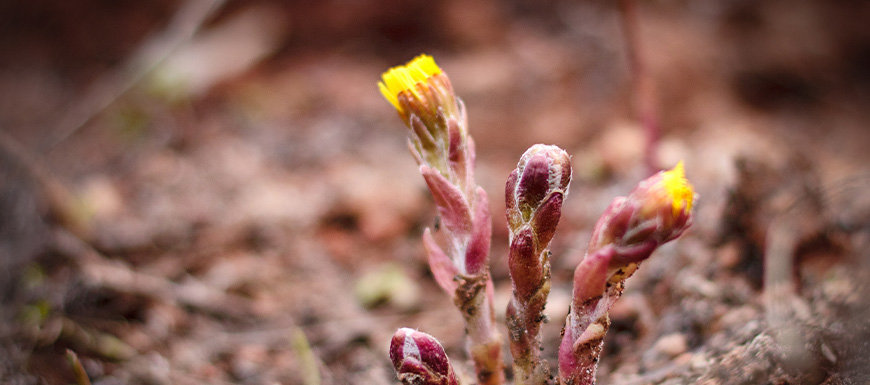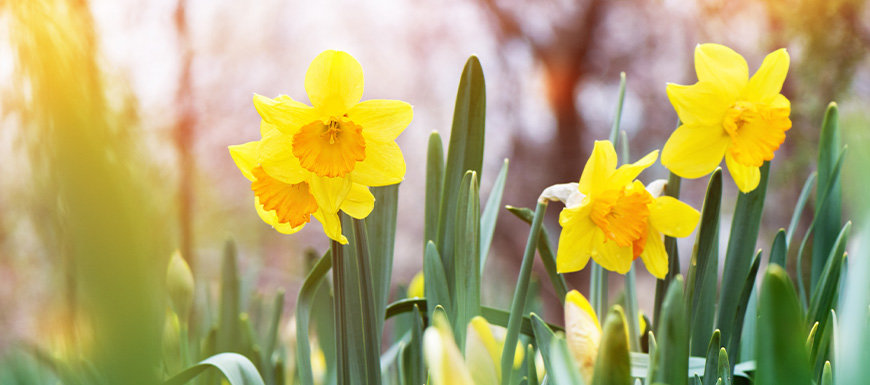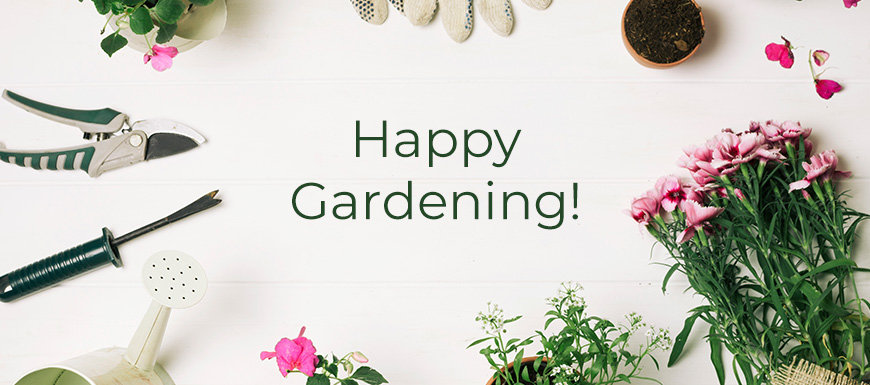
We collect basic website visitor information on this website and store it in cookies. We also utilize Google Analytics to track page view information to assist us in improving our website.

Spring is a magical time of year when the world awakens from its winter slumber and bursts into vibrant colors and scents. It’s also the perfect time to get your gardens ready for early season plants like pansies and spring bulbs. At our greenhouse, we believe that the key to a beautiful and bountiful garden lies in proper preparation.
In this blog post, we’ll share some tips on how to get your gardens ready for early season planting, including spring clean-up, adding new soil, and selecting the right plants. Don’t forget you can always come in and talk to our team of experts(link) to get the specific advice you need. This is especially important if you’re struggling with a specific issue like soil pH, or a pest infestation. Our team is here to help you get the most out of your growing season.
The first step to preparing your garden for early season planting is to do some spring clean-up. This includes removing any dead leaves, twigs, and debris that may have accumulated over the winter. Raking your lawn and flower beds is also important, as it will help to remove any thatch and allow air and water to penetrate the soil. Pruning your trees and shrubs is also a good idea, as it will promote new growth and help to shape your plants.
Removing weeds is another important task in spring clean-up. Weeds can rob your plants of valuable nutrients and water, and they can also spread quickly and take over your garden. You can remove weeds by hand or with a hoe, or you can use an herbicide if necessary. If you choose to use an herbicide, be sure to follow the instructions carefully and apply it when there is no wind.
Finally, you should rake up any old mulch or other organic material that may be on the ground. This will help to aerate the soil and allow water and nutrients to penetrate more easily.

Once you’ve done your spring clean-up, it’s time to add new soil to your garden and flower beds. This will help to replenish the nutrients that may have been lost over the winter months and provide a fresh start for your plants.
Before you add new soil, it’s important to test the pH levels of your soil. You can do this by using a soil testing kit, which you can purchase at most nurseries or garden centers. If your soil is too acidic or too alkaline, you may need to add some lime or sulfur to adjust the pH levels.
There are several types of soil that you can use, depending on the needs of your garden. Here are some common types:
Garden soil: This is a blend of topsoil, sand, and compost, and it’s ideal for most gardening needs. Garden soil is nutrient-rich and well-draining, which is important for healthy plant growth.
Potting soil: This is a soilless mix that is designed for use in containers. Potting soil is lightweight and contains peat moss, perlite, and other materials that promote drainage.
Compost: This is a nutrient-rich material that is made from decomposed organic matter, such as leaves, grass clippings, and kitchen scraps. Compost can be used as a soil amendment to improve soil structure and fertility.
Once you have checked your pH and balanced it. You should add a layer of compost to your garden and flower beds. Compost is rich in nutrients and will help to improve the structure of your soil. You can either make your own or you can purchase it at a nursery or garden center.
After you’ve added the compost, you can add a layer of topsoil to your garden and flower beds. Topsoil is the uppermost layer of soil and contains a high concentration of nutrients. This will provide your plants with the nutrients they need to grow and thrive.
When adding new soil, it’s important to mix it thoroughly with your existing soil. This will help to distribute the nutrients evenly and create a healthy growing environment for your plants. Be sure to add enough soil to create a depth of at least six inches, which will provide a good root zone for your plants.

Now that your garden and flower beds are ready, it’s time to start planting your early season plants like pansies and spring bulbs. Spring bulbs like tulips, daffodils, and crocuses are also a great choice for early spring. They can be planted in the fall and will bloom in the early spring, providing a burst of color after the long winter months.
When planting your early season plants, be sure to follow the planting instructions carefully. Pansies should be planted in well-draining soil and should be watered regularly. Spring bulbs should be planted in a location that gets plenty of sunlight and should be watered deeply once a week.
It’s also important to mulch around your plants to help retain moisture and keep weeds at bay. You can use a layer of straw, wood chips, or shredded leaves for this.

Here are some popular choices for early spring plants and flowers:
Pansies are a popular choice for early spring because they can tolerate cooler temperatures and can even survive a light frost. They come in a wide range of colors and can add a pop of color to your garden. Pansies are easy to grow and can thrive in containers or in the ground. They prefer well-draining soil and should be watered regularly. Pansies also benefit from regular deadheading to encourage more blooms.
Primrose is another early season plant that can add a pop of color to your garden. They come in a range of colors, including pink, purple, and yellow. Primrose is easy to grow and can thrive in partial shade or full sun. They prefer moist soil and should be watered regularly.
Tulips are a classic early season plant that is popular for their bright and bold colors. They come in a range of colors, including red, pink, yellow, and purple. Tulips are easy to grow and can be planted in the fall for early spring blooms. They prefer well-draining soil and should be watered regularly. Tulips also benefit from regular deadheading to encourage more blooms.
Daffodils are another classic early season plant that is popular for their bright yellow blooms. They are easy to grow and can be planted in the fall for early spring blooms. Daffodils prefer well-draining soil and should be watered regularly. They also benefit from regular deadheading to encourage more blooms.
Crocus is a low-growing plant that is perfect for adding a pop of color to your garden. They come in a range of colors, including purple, white, and yellow. Crocus is easy to grow and can be planted in the fall for early spring blooms. They prefer well-draining soil and should be watered regularly.
Hyacinth is an early season plant that is popular for its fragrant blooms. They come in a range of colors, including blue, pink, and white. Hyacinth is easy to grow and can be planted in the fall for early spring blooms. They prefer well-draining soil and should be watered regularly.
In addition to the plants mentioned above, there are many other early season plants to consider for your garden, including violas and snapdragons. These plants can add color and interest to your garden, and they are easy to grow and care for.
When selecting early season plants, it's important to consider the amount of sunlight and shade in your garden. Some plants require full sun, while others thrive in partial shade. You should also consider the amount of water your plants will need and whether they prefer well-draining soil or soil that retains moisture.
In conclusion, selecting early season plants is an important part of planning your garden. By choosing plants that can tolerate cooler temperatures and can even survive a light frost, you can ensure that your garden looks beautiful throughout the spring season.
Consider plants like pansies, primrose, tulips, daffodils, crocus, and hyacinth when planning your early season garden. With a little planning and care, you can create a beautiful and thriving garden that will provide enjoyment throughout the spring season.
Come by Warren Greenhouses and speak to one of our experts to get the plants and supplies you need to prepare your flower beds for a long growing season. By putting in a little extra work, in the early spring, you can set yourself up for whole summer for easy growing.
